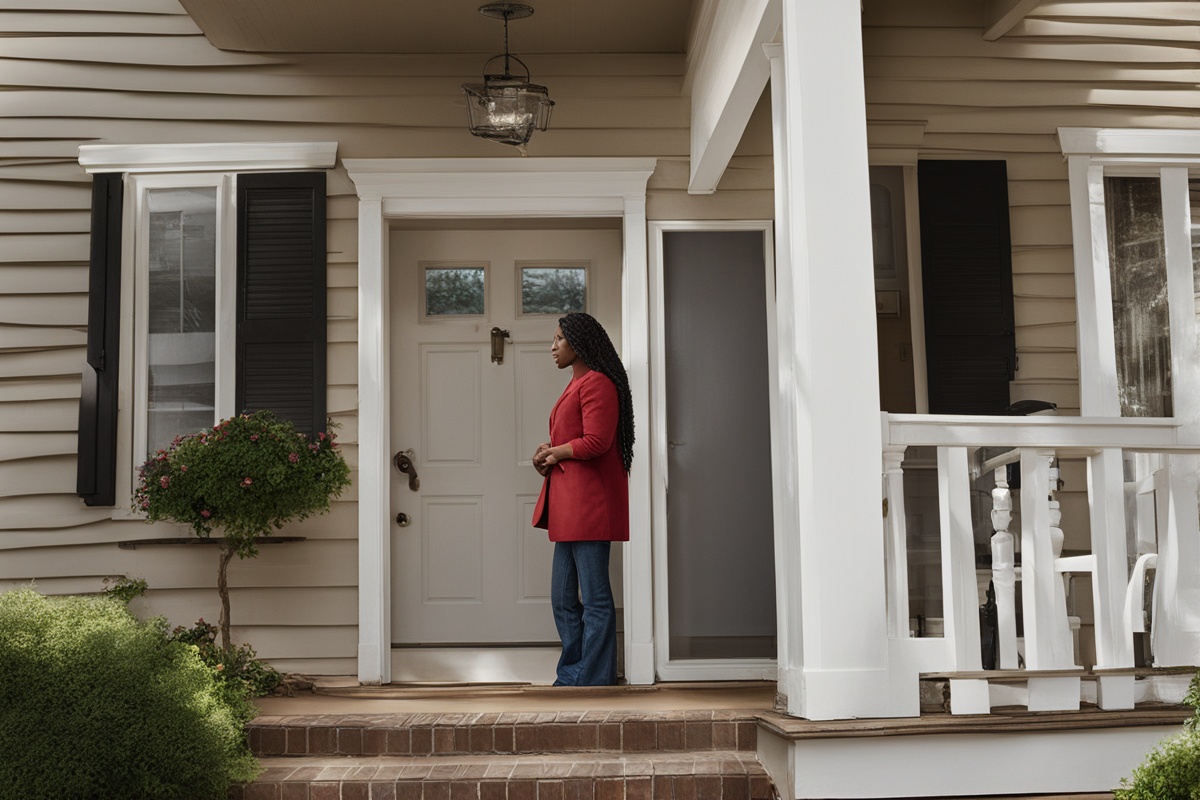Losing a loved one is one of the most profound experiences a person can endure, and for homeowners, the emotional challenges after loss can be compounded by the responsibilities and memories tied to a shared space. Whether it’s the home you built together or a place filled with echoes of laughter and love, navigating emotional challenges after loss in such an environment requires resilience, patience, and often, a new perspective. This post explores how homeowners can cope with grief while managing their living spaces, offering practical advice and emotional support for those walking this difficult path.
Understanding Grief in the Context of Your Home
Grief is a deeply personal journey, and for homeowners, the home often becomes a central part of the grieving process. Every corner of the house might hold a memory—whether it’s the kitchen where you shared meals or the garden you tended together. These spaces can evoke both comfort and pain, making it essential to acknowledge the emotional weight they carry. Navigating emotional challenges after loss means recognizing that your home is more than just a physical space; it’s a repository of your shared history. Allowing yourself to feel these emotions without judgment is the first step toward healing.
During this time, it’s common to experience waves of sadness, anger, or even guilt when considering changes to your home. Understanding that these feelings are a normal part of grief can help you approach your living space with compassion for yourself. If you’re struggling, consider exploring resources on emotional wellness, such as our post on Coping with Grief in Shared Spaces, which offers additional insights into managing these complex emotions.
Creating a Safe Emotional Space at Home
Your home should be a sanctuary, especially during times of loss. However, when grief is fresh, it can feel like a constant reminder of what’s missing. To navigate emotional challenges after loss, consider small adjustments to create a safe emotional space. This doesn’t mean erasing memories but rather finding ways to honor them while giving yourself room to heal. For example, you might designate a quiet corner of your home for reflection, filled with comforting items like a favorite blanket or photos of happier times.
Alternatively, some homeowners find solace in temporarily rearranging furniture or redecorating a room to shift the energy of the space. These changes don’t have to be permanent, but they can provide a sense of control during a time when so much feels out of reach. If you’re unsure where to start, our guide on Redesigning Your Home for Emotional Healing offers practical tips for creating a nurturing environment.
Managing Practical Responsibilities Amid Grief
As a homeowner, the practical demands of maintaining a property don’t pause, even when you’re grieving. Bills, repairs, and daily upkeep can feel overwhelming when you’re already emotionally drained. Navigating emotional challenges after loss often involves balancing these responsibilities with self-care. Start by prioritizing tasks—focus on what’s urgent, like paying bills or addressing safety concerns, and let less critical chores wait.
If you’re struggling to keep up, don’t hesitate to ask for help. Friends, family, or even professional services can step in to lighten the load. Additionally, consider reading our article on Managing Home Maintenance During Difficult Times for strategies to stay on top of household duties without added stress. Remember, it’s okay to take things one day at a time—your well-being comes first.
Deciding Whether to Stay or Move On
One of the most significant decisions homeowners face after a loss is whether to stay in the home or move to a new space. This choice is deeply personal and often tied to emotional and financial factors. For some, staying in the home provides a sense of continuity and connection to their loved one. For others, the memories are too painful, and a fresh start in a new environment feels like the best path forward.
Navigating emotional challenges after loss means giving yourself permission to explore both options without pressure. Take time to reflect on what the home means to you now and whether it supports your healing. If you’re considering a move, our post on Relocating After Loss: Emotional and Practical Considerations can help you weigh the pros and cons. There’s no right or wrong answer—only what feels right for you.
Seeking Support and Building Community
Grief can be isolating, especially when you’re surrounded by a home full of shared memories. However, connecting with others can be a powerful way to navigate emotional challenges after loss. Reach out to friends, family, or local support groups who understand what you’re going through. Sharing your story with others who have experienced similar losses can provide validation and comfort.
Online communities and forums are also valuable resources for homeowners dealing with grief. These platforms allow you to connect with others from the comfort of your home, offering a sense of belonging during a lonely time. For more ideas on finding support, check out our article on Building a Support Network as a Homeowner. Remember, you don’t have to face this journey alone—there are people ready to help.
Honoring Memories While Moving Forward
Finding a balance between honoring the past and embracing the future is a key part of navigating emotional challenges after loss. Your home can play a significant role in this process. Consider creating a dedicated space for mementos, such as a memory box or a small display of your loved one’s favorite items. These tangible reminders can help you feel connected without overwhelming your daily life.
At the same time, allow yourself to make new memories in your home. Invite friends over for a small gathering, start a new hobby in a shared space, or plant a tree in the yard as a living tribute. Healing doesn’t mean forgetting—it means integrating the past into a life that continues to grow. Be gentle with yourself as you take these steps, knowing that each one is a sign of strength.
Disclaimer: The information provided in this post is for general informational purposes only and is not intended as professional medical or psychological advice. Grief and emotional challenges are deeply personal, and individual experiences may vary. If you are struggling with severe emotional distress or mental health concerns, please consult a licensed therapist, counselor, or healthcare provider for personalized support. The resources and suggestions mentioned here are not a substitute for professional care.
References
- Mayo Clinic: Grief: Coping with the Loss of a Loved One
- HelpGuide: Coping with Grief and Loss
- Psychology Today: Understanding Grief
- National Institute of Mental Health: Coping with Traumatic Events
- American Psychological Association: Grief Resources
This content is for informational purposes only and not a substitute for professional advice.





